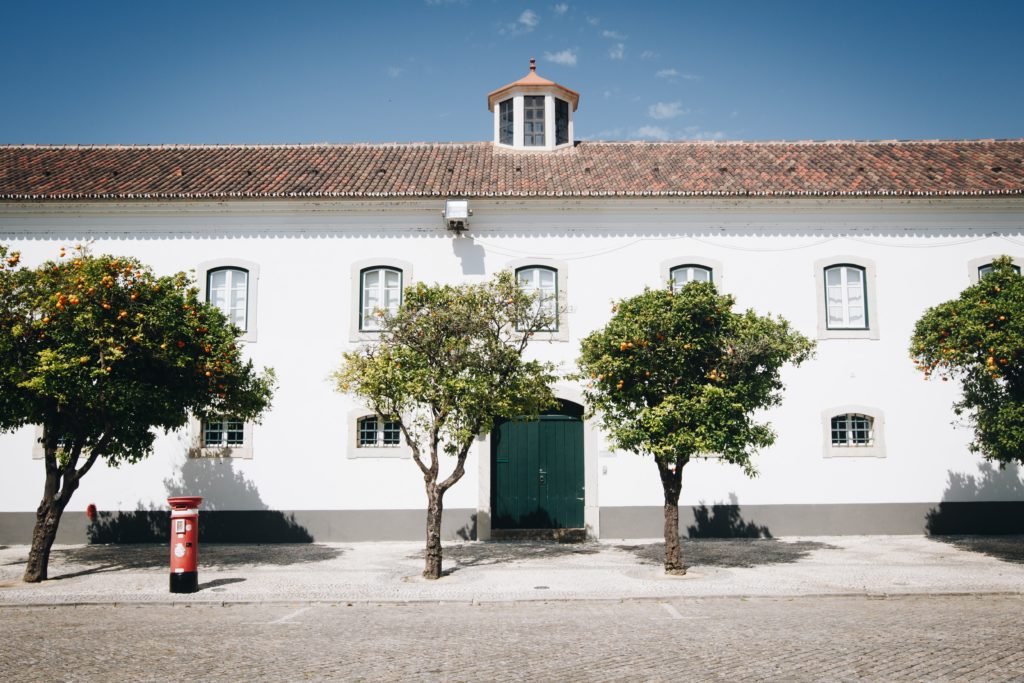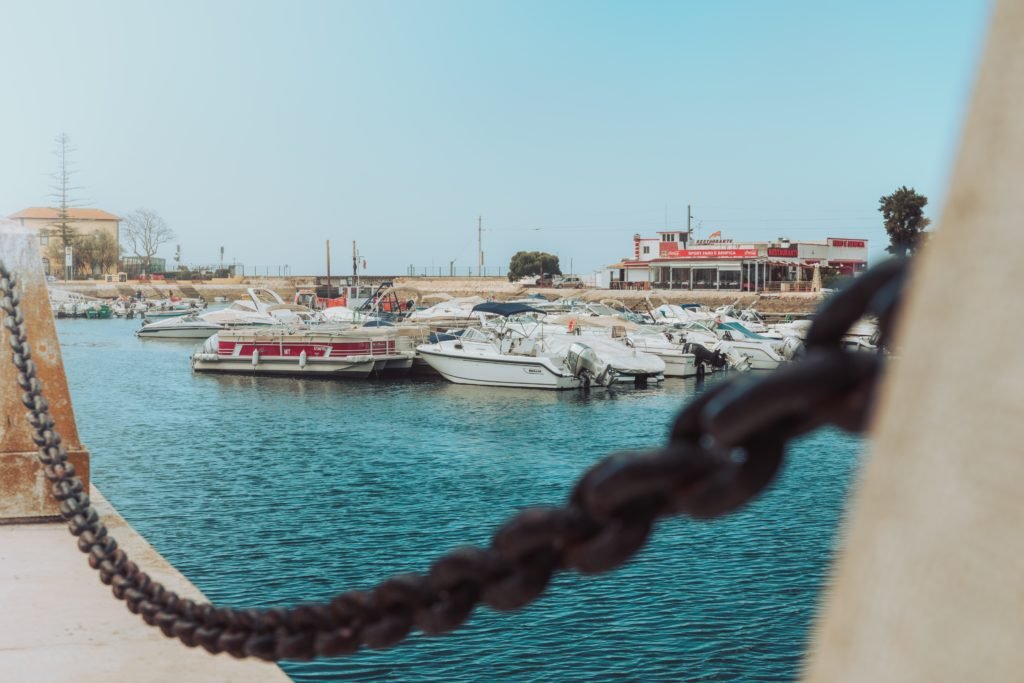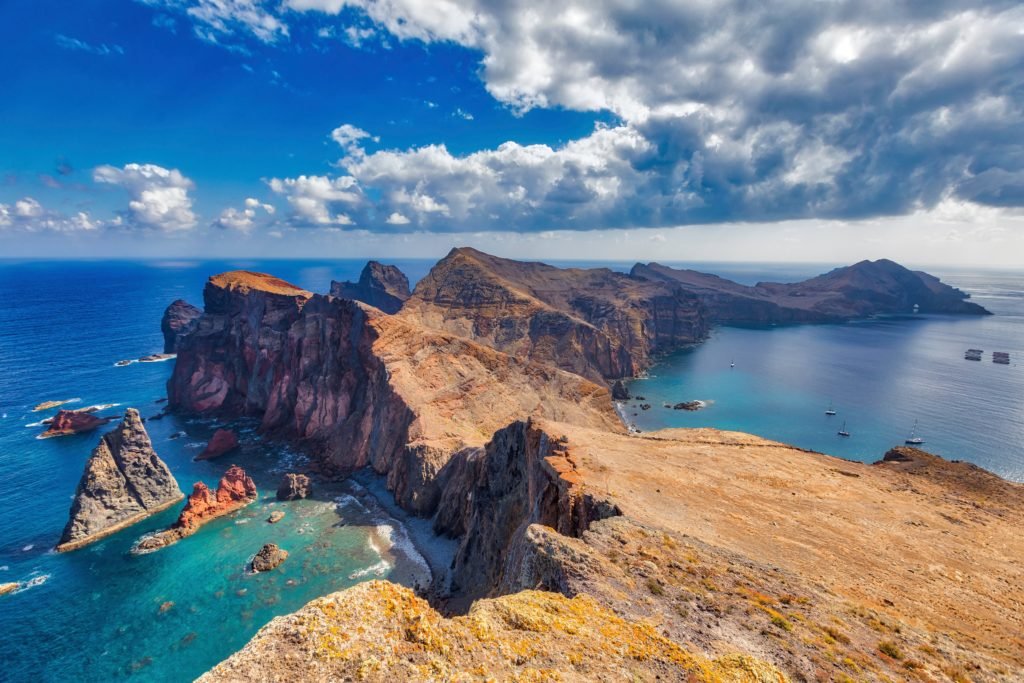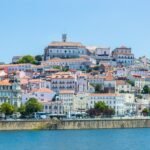
The Southernmost region of Portugal, the Algarve, is best known for its beaches with their beautiful cliffs and retreats, and the clear blue waters where the Atlantic Ocean and the Mediterranean Sea meet.
But there is also so much to discover away from the coast. In this guide, we’re going to show you a bit of everything that the Algarve has to offer, from the coast to the small towns and villages that enchant visitors inland.
So whether you travel for culture or for the sandy beaches, this region has something for you!
Contents
Things to do in the Algarve
Below you will find some suggestions on which cities and towns to visit the Algarve – and most importantly, what to do in each of these places.
City of Faro

As a holiday destination, Faro is often overlooked, considered only as a gateway to the beaches due to the presence of an airport.
This has allowed Faro, the Capital of the region, to retain its peaceful atmosphere and traditional charm within the walls of the Old Town. Start by visiting the Municipal Museum as an introduction to the roots of the region. After all, before the Algarve was discovered by tourists, it was discovered by Moors and Romans.
Afterward, and if you’re not faint of heart, you may enjoy visiting the Chapel of Bones, which is made of exactly what it sounds like. The bones were exhumed in the 19th century from Faro’s overcrowded cemetery and belong to the monks who once served the city. Today, they are aligned in interesting geometric patterns.
The rich history of Faro is on display at the Roman Ruins of Milreu. This was once an opulent villa of the Roman Empire, and it remained occupied until the early days of the Muslim dominion over the region. Today, you can still see the architectural outlines of a 4th century Roman family with high social and political status.
But if you are looking to delve more into the nature side of Algarve, Faro lies on the edge of the Ria Formosa Natural Park, which is a sanctuary for migratory birds and wildlife. On the coastal end of the Ria Formosa Natural Park, there are three sandbank islands, which are some of the most untainted in the Algarve.
Monchique Village

In the middle of the Algarve, 60 km northwest of Faro, you’ll find a beautiful and quiet village named Monchique.
It is located in the Mountain Range with the same name, which is famous for its medicinal waters, already coveted by the Romans, and rich vegetation.
After breathing in the fresh air, go on a leisurely hike through cork oaks, eucalyptus and orange trees – you’re welcome to try what will almost undoubtedly be the best tasting orange you’ve ever had!
Vila Real de Santo António Village
This village on the border with Spain is quite unique in Portugal. The country has one of the oldest borders in the world, and its cities have been growing organically over millennia. But Vila Real de Santo António, which was entirely destroyed by a tsunami in the 18th century, was completely rebuilt in the image of grand European capitals. For this reason, Vila Real de Santo António is the only city in Portugal with a grid-line layout.
This village is on the border with Spain, and ferry boats make the crossing 24 times a day from one country to the other, so you can’t miss Vila Real de Santo António if you’re heading east. Because it’s more inland and yet closer to the Mediterranean Sea, expect much warmer waters here on the beach. All in all, come for the architecture, stay for the warm waters, esplanadas (outdoor cafés and restaurants) and delicious, fresh fish.
About 10 minutes north of Vila Real de Santo António you’ll find Castro Marim, a quaint little village known for its castle and surrounded by a little-known natural reserve. Here is where you’ll find an unusual Saline Water Spa, also dubbed as the “Portuguese Dead Sea”. Bathe in warm waters of high mineral concentration, apply clay, exfoliate with sea salt and revitalize your skin.
Alte Village
Right in the heart of Serra do Caldeirão, 30 km northwest of Faro, the Alte village is considered by many to be the most typical village in the Algarve. The Alte water stream runs through the town with freshwater that is heard throughout the village, bringing an effortless purity to it.
In fact, this water is a part of the history of this village. We are still able to find what is locally known as the Little and Big Fountains, which are springs that were the meeting place of village women who came to fill pitchers with water and wash their clothes. Today, this area invites you to have a nice, long picnic and a few hours of relaxation.
Where and what to eat in the Algarve
But the Algarve is so much more than cliffs, sand, seas and mountains. It is also about good food: fresh seafood and fish, obviously; but you can also look forward to having some good meat, as well as regional bread and various sweets. Oh, and such sweets!
At Sítio do Rio, next to Bordeira beach, order the fish of the day – any fish – but especially if it’s pregado fish. It’s unmissable! At Tasca do Petrol, halfway between Marmelete and Monchique, you’ll taste the proof that the inland is just as interesting as the coastal area. Just try one of the typical sausages at this tasca (the Portuguese version of the local pub) and you’ll understand why we say this.
The seafood rice and stews, prepared with Portuguese Carolino rice from the Tagus plains, fresh local ingredients, and tomato or garlic-based sauces, are another Algarvian staple. The Taberna da Maré in Portimão is one of the best places to try these western Algarvian dishes.
But you shouldn’t come to the Algarve and not try the barbequed chicken. The Guia area is known as the birthplace of one of Portugal’s famous chicken dishes. We suggest you stop by the Teodosio restaurant, where you’ll be delighted not just by the chicken, but also by the potato chips.
Finally, did anybody say sweets? There is no self-respecting pastry shop in the Algarve that does not have typical doce (pastry) Dom Rodrigo, made out of sweet angel hair, or the colorful, fruit-shaped marzipan cakes locally known as “doces finos” (fine sweets). However, very few prepare them as well as Quinta dos Avós, near Algoz.
In the small tasca Charneco, in Estômbar, you don’t get to choose what to eat, but you’ll be happy just the same. Every evening, the seven-course tasting menu always touches on some of the classic Algarve cuisines. We hope it’s stuffed squid day when you go there! (*Crosses fingers*)
Best Beaches in the Algarve

Praia de Odeceixe
Classified as one of the 7 Wonders of Portugal, the Odeceixe beach is special because it is bathed both by a water stream, the Ribeira de Seixe, and the Atlantic Ocean. But, truly, words don’t do it justice, so we encourage you to visit!
Praia da Bordeira
Not only is it one of the most beautiful beaches in the region, but it was distinguished by CNN as one of the best beaches for surfing in the world. The truth is that it deserves all the credit it gets, whatever the list it’s in.
It’s beautiful, large and — the cherry on top — there are great restaurants around it.
Praia da Barriga
Getting here is not easy, but you’ll be thankful. The Financial Times once said that the quietness you find on this “fierce beauty” will make up for the five miles of unpaved dirt roads.
It is also filled with cute nooks, that appear naturally in the cliffs, and laminated rock walls, deformed by the impact of the waves.
Praia do Barranco
It is surrounded by juniper bushes, sheltered by limestone rocks and its beauty is hard to explain in simple words. It may be a small beach, and sometimes it may get crowded, but the bay makes the sea look and feel more like a pool. It’s great for the kids and for paddle surfing, but it is also famous among divers, given the great diversity of marine species that live among the rocks at the seabed.
Praia de Benagil
This is one of the most famous postcards of the Algarve. We even risk saying that the skylight in the Algar de Benagil cave is known all over the world. The beach is protected by a cliff and lies at the bottom of a very steep valley. Very close by, you’ll find a quaint fishing village that should also be visited if you stop by the area.
Praia de Arrifes
If you are unlucky enough to go there on a high tide, you probably won’t get to know this beach. It is one of the smallest in the municipality of Albufeira and sometimes it simply disappears when nature decides to. But when the tide is low, local families love it because it’s small and because it has tiny waves. As you would expect, it doesn’t usually attract crowds of tourists like so many other beaches in the region. A significant benefit if you want to get away from the rush.
The best hotels in the Algarve
The Algarve has plenty of accommodation options – from high end to low cost – so you’ll likely find something within your budget. Let’s have a look at some of the options, shall we?
Hotel Dom Manuel I in Lagos
It is an adult-only hotel with a great location, a swimming pool and a buffet breakfast made with the freshest, most delicious ingredients. It’s certainly not by chance that it holds a 9.3 score on Booking.com. Dom Manuel I is within walking distance of the D. Ana Beach, one of the most famous beaches in Lagos. However, if you don’t feel like leaving the hotel every single day, we advise you to stay relaxed by the cozy pool at the hotel.
Hotel Tivoli Carvoeiro in Carvoeiro
This hotel is rated 9.5 in Booking and it’s easy to see why. It was renovated recently, but it enjoys the high-quality standards of a much older establishment. So, it’s the best of both worlds! Located in a small picturesque town called Carvoeiro, it is perfect for people just looking to relax. If you’re a guest at Tivoli Carvoeiro, you’ll also be able to enjoy a nearly private beach by the hotel.
Hotel Rural Quinta do Marco – Nature & Dining in Santa Catarina da Fonte do Bispo
This fantastic, renovated 5-star hotel offers far-reaching views of the famed Atlantic Ocean. It is located within an 18-hectare property, surrounded by green farmland. Much of the organic food that you’ll eat on the on-site restaurant comes from this property.
At the same time, the restaurant of the hotel provides panoramic views of the unique Algarve landscape. Staying in touch with Nature, being surrounded by quietness and mindfulness are part of the whole experience.
Loule Jardim Hotel in Loulé
A 3-star hotel with a better rating than many 5-star hotels? That is the Loulé Jardim Hotel, located in one of the biggest cities in the Algarve. Unlike the other hotels we mentioned, this one is located right in the city center, giving you the opportunity to live among the locals and enjoy some nightlife if you’re in the mood for it!
Hotel California Urban Beach in Albufeira
Right in the center of Albufeira, this is the hotel for those looking for a bit more than just sun, beaches and seafood. Not only is it located in one of the most dynamic cities of the Algarve – Albufeira – but it also features a lounge bar and a pool bar. It’s adults-only, so leave your kids at home if you’re going here!
As the hotel states “Albufeira City Centre is a great choice for travelers interested in bars, nightlife and restaurants.”
Hotel da Rocha in Portimão
The Hotel da Rocha is within walking distance of the Portimão marina, the bars and the restaurants of the lively Praia da Rocha. It also enjoys direct access to the golden beaches of Portimão.
This hotel is completely perfect for couples looking to stay in a city with a vibrant nightlife, plenty of typical restaurants and entertainment. On the other hand, if you’re looking to get away from the crowds of tourists, rent a car for a couple of days and venture to the nearby beaches of Armação de Pêra and the picturesque village of Alvor. Lots of benefits by staying here!
Best time to visit the Algarve

If you want to come when the weather peaks, when the food is freshest and when the drinks taste the best, then that’s anytime between July and September – the typical holiday months in Portugal.
But since that is the high season, prices will be higher and most beaches will be flooded with tourists, which can be a small downside.
If you’re looking to escape that scenario, then any other month will be just fine. It never gets truly cold in the Algarve (average temperature in January, the coldest month of the year, is 12ºC) and there are over 300 yearly days of sun. It’s one of the sunniest regions in Europe! So if you’re from a cold region, and you wish to spend Christmas or New Year in more comfortable weather conditions, a trip to the Algarve is quite perfect as well.








